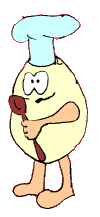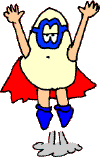|
|
Commentary: Is There a Third Force in Philippine Politics? Neither De Villa’s party nor Lim’s group fit into the concept of the third force––a clear and honest alternative to both the ruling party and the opposition By Roy P. Mendoza A few months back, Renato de Villa and Alfredo Lim teamed up to consolidate their forces in the hope of improving their respective chances of winning the presidency. The tandem made refer-ence to the ‘third force’ to differentiate itself from that of the two most powerful protagonists in the coming elections––the administration’s LAKAS-NUCD and the opposition Laban ng Mamamayan at Masang Pilipino (LAMMP). For a while the tandem’s label stuck as newspapers featured the purportedly formidable tandem in the headlines for several weeks. By late December however, the ‘third force’ was in tethers as Alfredo Lim severed his ties from De Villa and launched his own candidacy without De Villa. Both of them would not agree to be vice-president to the other.A few days before their team-up, de Villa signed a covenant, along with all the presidential aspirants of LAKAS-NUCD, to respect the decision of the president on who will finally become the party’s standard bearer. But he reneged on it when he was not chosen, leading to his breakaway from Lakas. Soon afterwards, De Villa’s campaign managers looked for something that would legitimize his presidential bid and offer voters a new and better kind of politics—different from the more traditional ones. In the process, they stumbled upon the idea of the ‘third force’ and wasted no time in stamping it on De Villa’s group that temporarily merged with that of Lim’s. They even added the adjective ‘united’ to make the tandem the nucleus by which other sectors or parties, that are only too willing to dispense with traditional politicians, will hopefully gravitate. But what exactly is the ‘third force’? Does De Villa’s Partido para sa Demokratikong Reporma (PDR) and Lim’s group fit into this mold or description?
Origin The concept of the third force is not exactly new. It is, however, a loaded term with a particular ideological slant. The earliest reference to the ‘third force’ could be traced to Alden Pyle, a character from Graham Greene’s "The Quiet American", who prophetically evoked its creation.1 He believed that the third force could defeat the communists where the French-supported government had failed.2 The concept was used intensively in Vietnam but there were other ‘third force’ elements, notably in Laos, Cambodia and Guinea-Bissau. In Marxist-Leninist analysis of the social classes, the ‘third force’ had become an adjunct of the petty, national and big bourgeoisie. In contrast, the vanguard communist party, the second force, is supposed to be equated with the working class and the peasants. The third force’s dialectical relations against the first (the ruling elite or the status quo) and second forces are not clear. There is a tendency for them to shift to the left or to the right because the third force itself is composed of elements that have leftwing and rightwing tendencies. Therefore, they cannot be trusted with leading or even taking an important role in the revolution. For the communists, they can work for the revolution but not against it. In other words, they could fight the existing government but should work outside the national democratic movement.3 In addition, the communists treated them as the secondary enemies of the revolution that should be dealt with after the downfall of the first force, depending on the attitude displayed by the third force during the revolution. The imaginary third force came into flesh during the Vietnam War, in reference to the patriotic South Vietnamese, who vehemently opposed President Nguyen Van Thieu and the military regime, yet were not members of the National Liberation Front nor the Provisionary Revolutionary Government of the communists. They fought against corruption, tyranny, and gross inefficiency of the Thieu regime as well as its conduct of the war against the North Vietnamese and local communist forces. Yet they were not amenable to the vision of society being offered by the communists. The third force was diverse and heterogeneous in the sense that it was composed of many groups, organizations and alliances. Its membership included academics, civil servants, Catholic priests, Buddhist monks and even former military men. As a whole, they represented the mainstream of the urban (South) Vietnamese society. In Vietnam, the ‘third force,’ aside from being urban-based, was also characterized as non-violent, non-power seeking and anti-Thieu and anti-US, therefore democratic (in the Marxist sense) and anti-imperialist.4 The term could also be applied to the catchall phrase ‘social democrats’ in the Philippines during the Marcos regime. Like the latter, they were united in their resistance against the tyranny and oppression of the Marcos regime but did not subscribe to the national democratic program espoused by the communist party. They included politicians from the old order, human rights groups, members of the church, people’s organizations, etc., and represented a fairly broad sector of society. Ironically, it was the Marcos dictatorship that confirmed the existence of the third force with the arrest of its key leaders in the late 1970s, holding them responsible for bombings and civil disobedience campaigns that were meant to destabilize the regime. Some favored armed struggle as a means to overthrow the Marcos regime, as there was room for this form of struggle. However, the majority abhorred that option and favored elections instead. But in Vietnam, the Thieu regime denied the existence of the third force until the early part of 1975 when it was about to fall. They were, however, more ideologically oriented than their Filipino counterparts. And in contrast to the Philippines, the option for armed struggle was not available to the Vietnamese because the communists monopolized armed struggle. The internal diversity of the third force in both Vietnam and the Philippines tended to produce differing positions on what to do with the main enemy, i.e. the first force. While the more radical ones opted to seize state power, the moderate ones saw the end of their role once the downfall of either the Marcos or Thieu regimes had been carried out. The third force in both Vietnam and the Philippines did not develop overnight nor did any individual or group forcefully create them. Instead, they developed or were shaped by historical events and conjunctures. In both cases, the ‘third force’ was composed of well-meaning reformers and idealists who wanted to transform their societies from the morass they were in then.
What the third force really means The third force was thus defined as another group offering an alternative platform or solution to that of the first and second forces. Hence, the term third force should not be used to designate any group that is simply a third party in a political undertaking. Viewed in this context, De Villa’s group does not fit into the conceptual ‘third force’. It cannot be considered as such because it does not serve as a clear and honest alternative to both Lakas and the opposition that it looks down on as bastions of traditional politicians or trapos. It is bereft of a known ideology that would differentiate it from the ruling party and the opposition. Besides, the PDR is not exclusively a movement that seeks to make a better society as envisioned by people identified with the ‘third force’ whether in election time or not. It was borne out of a single purpose—to win the presidency, the vice-presidency and the most possible number of senators in the 1998 elections. Furthermore, even if De Villa and Lim are open-minded about reforms, their groups lack one important feature attributed to the third force—personalities identified with reforms or genuine reformers who are not seeking public office.5 Lastly, the tandem cannot be called united since the third force connotes an amalgam of groups united not precisely in what they accept but more so in what they reject. Sadly, even if De Villa or Lim are presumably better presidential candidates than the rest of the pack, they are not exactly the fitting bearers of the anti-trapo banner. It may be worthwhile for the handlers of both De Villa and Lim to bear in mind the attributes of the ‘third force’ to distinguish the two from the mostly mediocre crop of presidentiables. Endnotes 1.Graham Greene. "The Quiet American", New York, Viking Press Inc., 1956 2. Armando S. Malay Jr. "The Third Force in South Vietnam". Quezon City, Asian Center - University of the Philippines, 1993, p.1 3. Ibid. p.39-44 4. Ibid. p.3 5. With the sole exception of Ms. Haydee Yorac who had demonstrated her sincerity in introducing electoral reforms. She decided to run for senator under the PDR banner much later after this article had been written.
|






